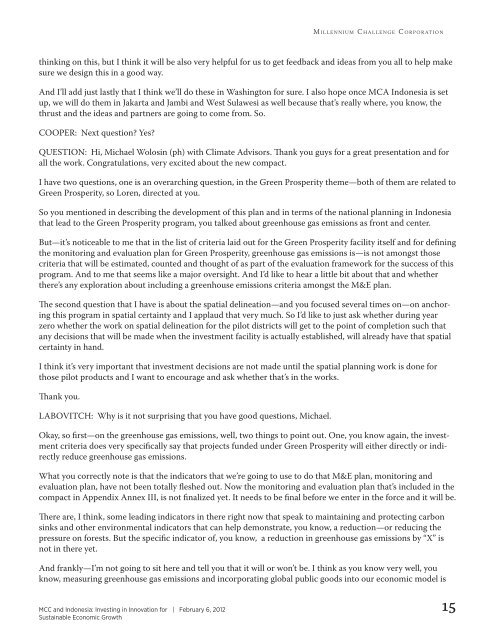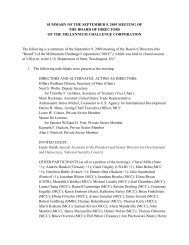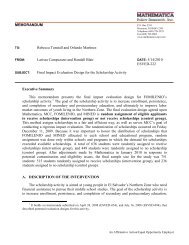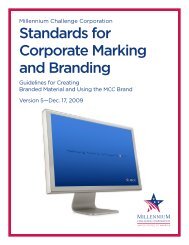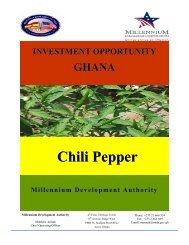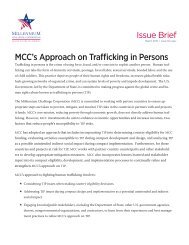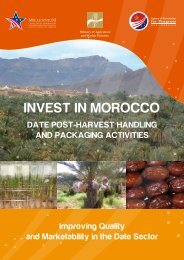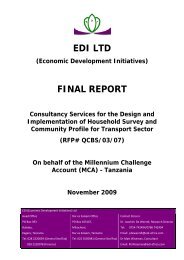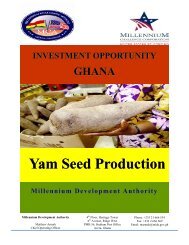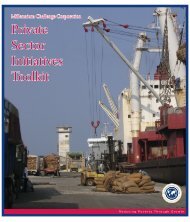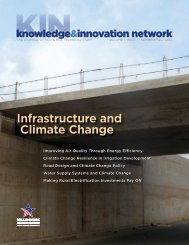Transcript - Millennium Challenge Corporation
Transcript - Millennium Challenge Corporation
Transcript - Millennium Challenge Corporation
You also want an ePaper? Increase the reach of your titles
YUMPU automatically turns print PDFs into web optimized ePapers that Google loves.
thinking on this, but I think it will be also very helpful for us to get feedback and ideas from you all to help make<br />
sure we design this in a good way.<br />
And I’ll add just lastly that I think we’ll do these in Washington for sure. I also hope once MCA Indonesia is set<br />
up, we will do them in Jakarta and Jambi and West Sulawesi as well because that’s really where, you know, the<br />
thrust and the ideas and partners are going to come from. So.<br />
COOPER: Next question? Yes?<br />
QUESTION: Hi, Michael Wolosin (ph) with Climate Advisors. Thank you guys for a great presentation and for<br />
all the work. Congratulations, very excited about the new compact.<br />
I have two questions, one is an overarching question, in the Green Prosperity theme—both of them are related to<br />
Green Prosperity, so Loren, directed at you.<br />
So you mentioned in describing the development of this plan and in terms of the national planning in Indonesia<br />
that lead to the Green Prosperity program, you talked about greenhouse gas emissions as front and center.<br />
But—it’s noticeable to me that in the list of criteria laid out for the Green Prosperity facility itself and for defining<br />
the monitoring and evaluation plan for Green Prosperity, greenhouse gas emissions is—is not amongst those<br />
criteria that will be estimated, counted and thought of as part of the evaluation framework for the success of this<br />
program. And to me that seems like a major oversight. And I’d like to hear a little bit about that and whether<br />
there’s any exploration about including a greenhouse emissions criteria amongst the M&E plan.<br />
The second question that I have is about the spatial delineation—and you focused several times on—on anchoring<br />
this program in spatial certainty and I applaud that very much. So I’d like to just ask whether during year<br />
zero whether the work on spatial delineation for the pilot districts will get to the point of completion such that<br />
any decisions that will be made when the investment facility is actually established, will already have that spatial<br />
certainty in hand.<br />
I think it’s very important that investment decisions are not made until the spatial planning work is done for<br />
those pilot products and I want to encourage and ask whether that’s in the works.<br />
Thank you.<br />
LABOVITCH: Why is it not surprising that you have good questions, Michael.<br />
Okay, so first—on the greenhouse gas emissions, well, two things to point out. One, you know again, the investment<br />
criteria does very specifically say that projects funded under Green Prosperity will either directly or indirectly<br />
reduce greenhouse gas emissions.<br />
What you correctly note is that the indicators that we’re going to use to do that M&E plan, monitoring and<br />
evaluation plan, have not been totally fleshed out. Now the monitoring and evaluation plan that’s included in the<br />
compact in Appendix Annex III, is not finalized yet. It needs to be final before we enter in the force and it will be.<br />
There are, I think, some leading indicators in there right now that speak to maintaining and protecting carbon<br />
sinks and other environmental indicators that can help demonstrate, you know, a reduction—or reducing the<br />
pressure on forests. But the specific indicator of, you know, a reduction in greenhouse gas emissions by “X” is<br />
not in there yet.<br />
And frankly—I’m not going to sit here and tell you that it will or won’t be. I think as you know very well, you<br />
know, measuring greenhouse gas emissions and incorporating global public goods into our economic model is<br />
MCC and Indonesia: Investing in Innovation for | February 6, 2012<br />
Sustainable Economic Growth<br />
15


